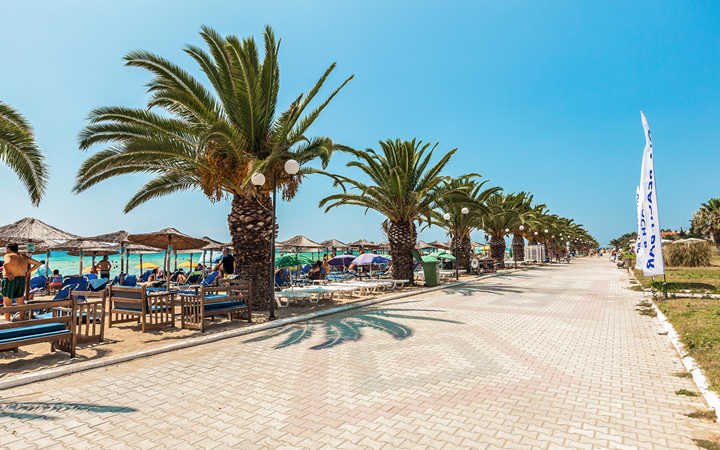Nea Plagia is one of those villages not on any of the 3 fingers of Halkidiki's peninsulas, but a little north and to the west of them. As with the other towns and villages on this southwestern coast of Halkidiki, the proximity of Nea Plagia to Thessaloniki is a plus. The airport is even closer- only about 40km, or a leisurely half-hour drive. A lot of people from the city have summer homes in the area.
Just a kilometer to its east is Flogita, another village of similar size. Nea Plagia has about 1,500 year-round residents. Their respective beaches, and the accomodations that line them, have already spread out along the coast and merged, and it's probably only a matter of time before the two villages merge as well, as houses and apartment blocks gobble up the rich farmland between the two. There is a large, oval-shaped toumba, or earthwork between the two towns, oriented east and west, and about 200m long and 100m wide.
Nea Plagia is crowded with visitors during the summer months, both from elsewhere in Europe, and from the area, especially the big city just 50km to the northwest.
People have been living in the area since pre-history, but little in particular is known about Plagia's ancient past. The modern village was settled by refugees from Eastern Thrace, in 1922. Before that the land was owned and worked by monks from Mt. Athos.
The beach is wide, with soft, golden sand. It's bordered by a number of cafes and restaurants, and the local government has planted palm trees along the road fronting the beach. Nea Plagia has frequent bus service to and from Thessaloniki.












